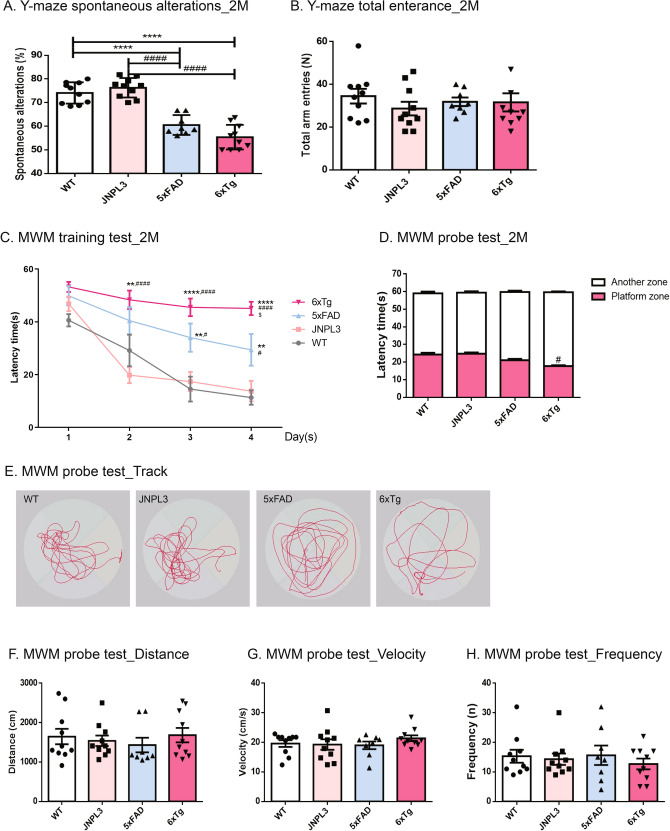Figure 1.
Learning and memory deficits in 2-month-old 6xTg mice. Two-month-old male 6xTg mice and their age- and gender-matched WT, JNPL3, and 5xFAD littermates were tested (n = 8–10 per group). (A, B) In the Y-maze test, 2-month-old male 6xTg mice showed significantly decreased spontaneous alternation as compared with WT mice. However, there was no significant difference in total entries across all groups. (C) In the acquisition training for the Morris water maze (MWM), escape latencies of all group mice decreased progressively over 4 days of training, regardless of the genotypes. However, 6xTg mice showed significantly increased latency time compared with WT mice. (D) In the probe test of MWM, 6xTg mice showed significantly reduced swimming time in the platform zone compared to the other groups. (E) Representative swim paths during the probe test. We did not observe any difference in distance (F), velocity (swim speed) (G), or frequency (H) during the probe test. All data are given as means ± SEM. The statistical analyses were performed by one-way ANOVA followed by the Tukey's multiple comparisons test, and for MWM, a two-way repeated-measures ANOVA followed by a Bonferroni multiple comparisons correction was used to compare the escape latency in 4 days of continuous hidden platform trials. ****p < 0.0001, **p < 0.01 vs. WT; ####p < 0.0001, ##p < 0.05 vs. JNPL3; $p < 0.01 vs. 5xFAD.

